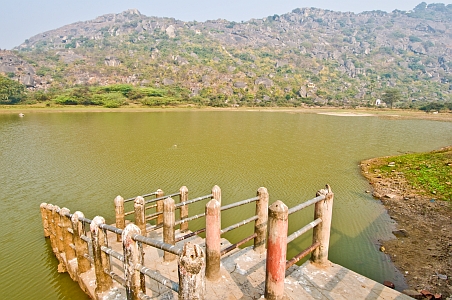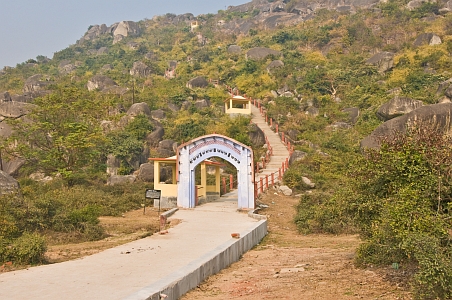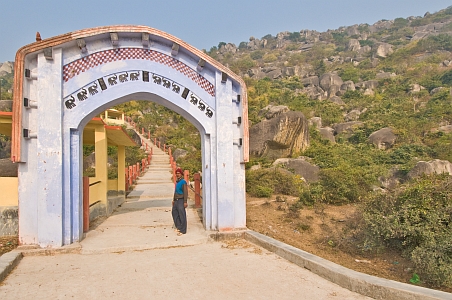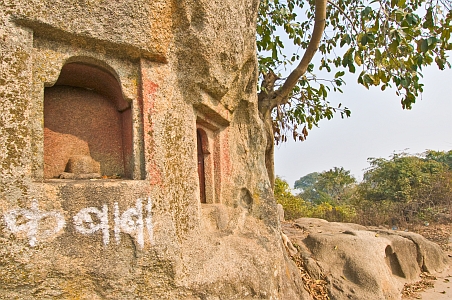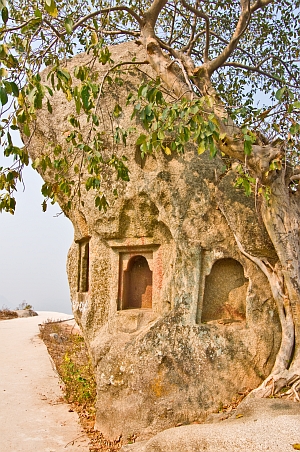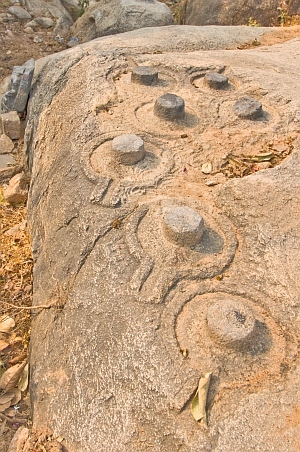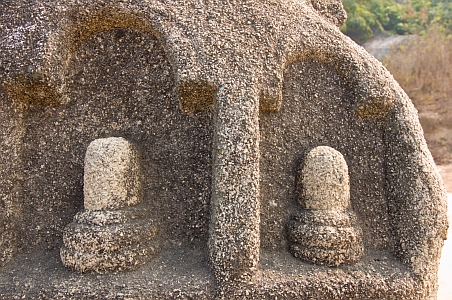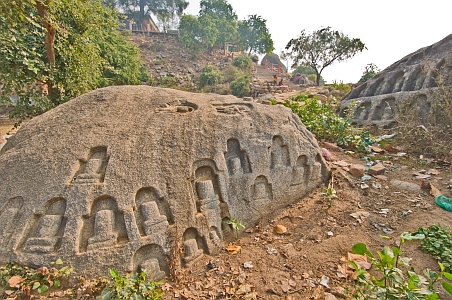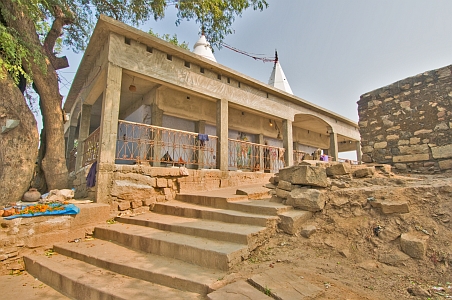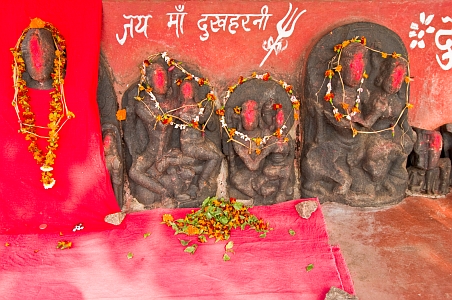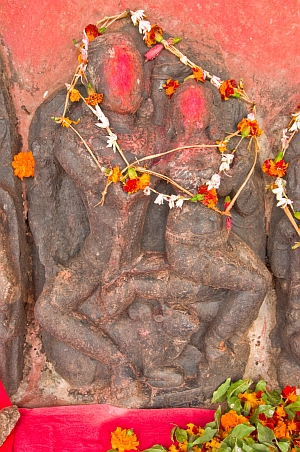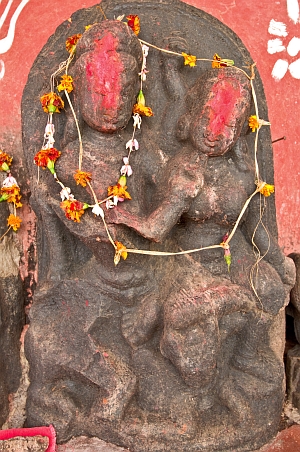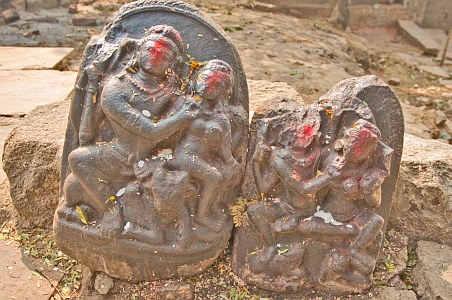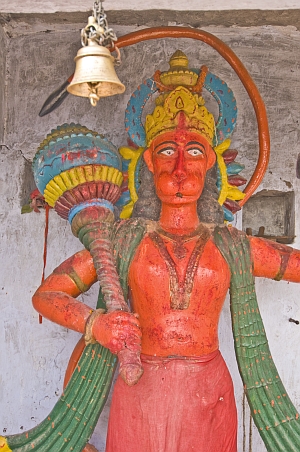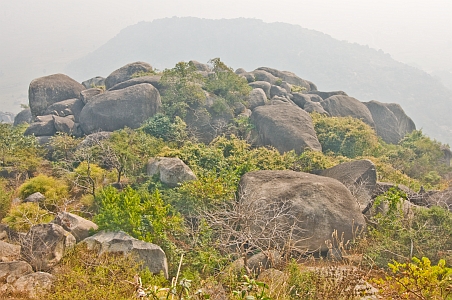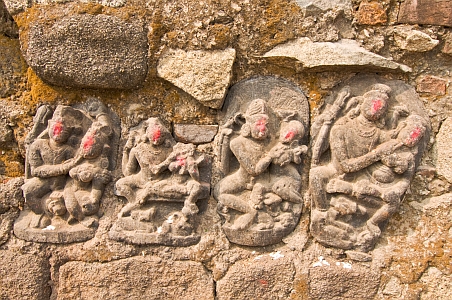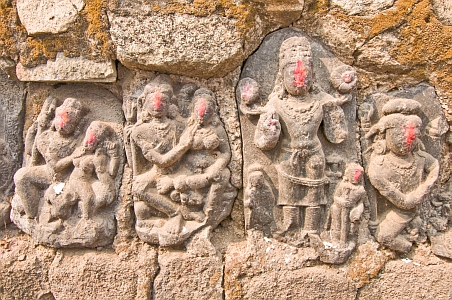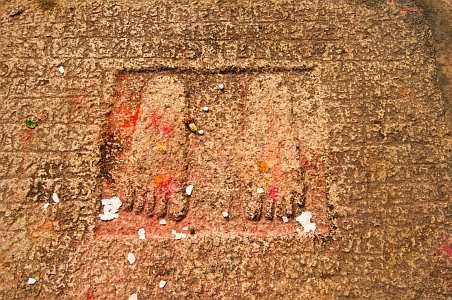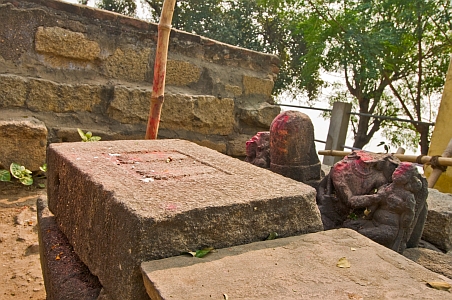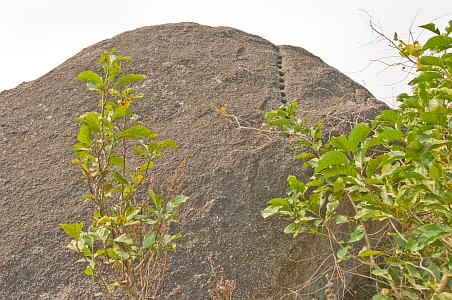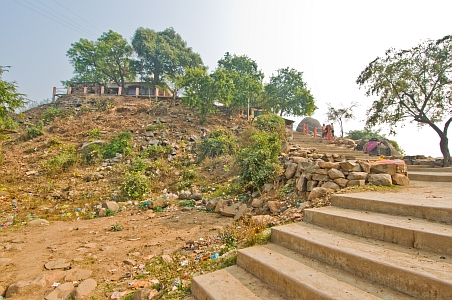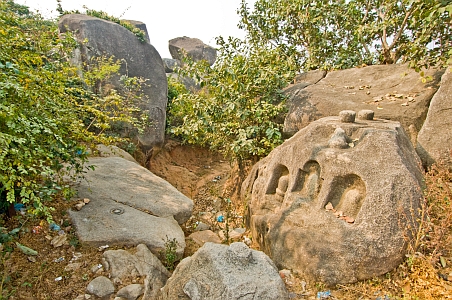The Barabar Caves - 5: visiting Siddheshwar Peak
Adjacent to the Barabar Caves mentioned so far is a large lake, the Anand Sarovar. Next to this is a sizeable hill with steps to the top. This hill, known as Siddheshwar Peak, has been a place of Hindu pilgrimage for many centuries, and accounts for the majority of local visitors to the site. Siddheshwar, which can also be used as a boy's name in India, means ' Lord of the Blessed'.
Climbing the hill is not particularly arduous, but does take some effort, so frequent rests along the way are a good idea, and help the pilgrim or traveller to enjoy the fine scenic views, and marvel at the rocky landscape set between hills.
When I first visited Siddheshwar Peak in 1993, it was not easy to find the most convenient way to climb the hill, and I had to skirt around a variety of large boulders to get to the top. There were a number of goat tracks and paths up the hill, but it was never apparent to me just where the main track ascended the boulder-field.
In 2009, things had changed considerably. A proper concrete path, steps and a handrail now ascend the hill, and it is impossible to get lost on your way to the summit. There are a number of seats and rest areas to be encountered on the way, and I would recommend that you take full advantage of them.
The path passes a number of interesting carvings along the way. Many of these take the form of Lingams, a revered Hindu symbol connected to the god Shiva, who's temple is to be found at the top of Siddheshwar Peak. Some of these lingams are housed in small shrines and niches carved into the solid rocks, whilst others are carved on the top or sides of sandstone or gneiss boulders.
A modern temple, the Holy Baba Siddhnath temple, has been recently built on the top of Siddheshwar Peak, and though rather ugly at present, will no doubt be finished and decorated in due time. Though not completed, the temple has 'opened for business' and a number of resident priests will be pleased to show the pilgrim or visitor around, and perform puja or other ceremonies as required.
The present temple has been built on the remains of a much earlier one, possibly of the Gupta period, that the local legends attribute to Bana Raja, the father-in-law of the epic king Jarasandha of Rajgir. This older temple had been all but demolished, and only a few stones remained. In 1993 there was nothing much of a temple at all, just a number of carvings and statues that gazed over the surrounding countryside. I rather preferred it that way - it was very peaceful and most evocative, though no doubt the Hindu pilgrim will prefer more facilities for worship.
I recognised quite a few of the statues from my last visit, though some had gone and others had replaced them. As can be seen from the photographs, the faces of some of the divinities have been marked with the scarlet kumkum powder, and garlanded with fresh marigold blossoms, and other flowers.
Some interesting notes that help to identify some of the deities here are found in the Buddhist Circuit of Bihar website. It tells us 'On the rocks of the northern and eastern face of Kauva Dol Hill, numerous figures representing mostly Hindu deities like Hara-Gauri, Mahishasuramarddini Durga, Ganesa etc. A few figures of the seated Buddha are also noticed viz of Vajrasattva, Prajnaparamita and a seated Buddha. The sculptures may be assigned to a period between 800 to 1200 A.D. At Barabar Hills the passage leading to the Holy Siddheshwarnath temple are ancient rock cut sculptures or Shiva Linga, Shiva Parvati, Ganesha etc. The image of the goddess Durga are how ever largest in number at Kauva Dol Hills. the four armed Durga slaying the buffalo demon Mahishasura. Other Brahmanical Figures are also noticed.'.
At the entrance to the temple stands a large statue of Hanuman, the monkey god. Above is a brass bell, which is rung by visiting pilgrims.
Amongst the numerous boulders that cover the sides and summit of Siddheshwar Peak, some can be seen that contain a seemingly pointless lines of small holes, cut into the sides or upper surface. To the initiated, though, these holes are of great interest, as they show how large boulders were cut or broken into smaller pieces, as required. With no modern steel tools or explosive, an alternative means was required. The method chosen involved the mix of metal, wood, and water.
First, the rock was carefully studied to spot existing fault lines in the strata. A line of small holes were then cut into the rock using available tools. The lines would follow an existing fault line, if possible. Tightly fitting wooden wedges were driven into the holes, and then water was poured over the wedges. This causes the wood to expand, and as long as the spacing had been correctly chosen, the expansion would crack open the rock along the line of holes, and divide the boulder into two new pieces. We can only guess why the splitting of this particular rock was not completed, but by not doing so, it remains a valuable clue to the methods used in the past.
Please visit Page 6 of the Barabar Cave series..

